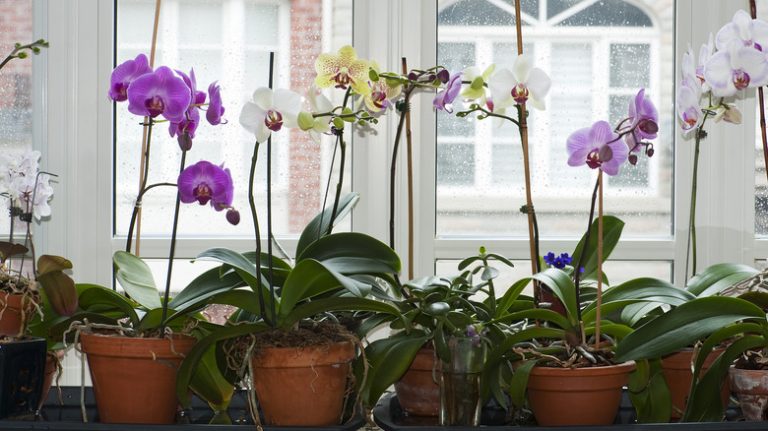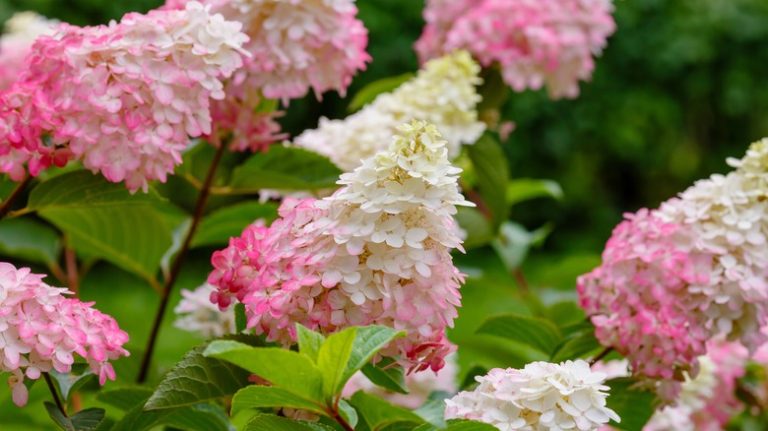Stokes Aster, also known as Stokes’ Aster, is a showy perennial plant that is native to the Danube River region. It is a popular choice among gardeners because of its easy cultivation and attractive characteristics. The plantings of Stokes Aster can be seen in shades of white, pink, and bluish-purple, adding a pop of color to late-season garden landscapes.
This guide will provide you with valuable information on how to grow and care for Stokes Aster. You will learn about its light requirements, cultivation techniques, and common pests and diseases. Additionally, we will show you how to propagate Stokes Aster and provide tips on pruning and fertilizing to ensure healthy growth.
Stokes Aster is a versatile plant that can tolerate a wide range of temperatures and soil conditions. It is drought-tolerant and resistant to many diseases and pests. This makes it a great choice for both beginner and experienced gardeners. Whether you want to add some color to your garden or create a beautiful cut flower arrangement, Stokes Aster is an excellent choice.
So, if you’re ready to learn more about Stokes Aster and how to incorporate it into your garden, let’s dive in and discover the beauty and benefits of this wonderful plant.
Source: “Stokes Aster: A Gardener’s Guide” by University of Gardening
Stokesia laevis
Stokesia laevis, commonly known as Stokes Aster, is a beautiful perennial plant that is native to the Southeastern United States. It is a member of the Asteraceae family and is known for its stunning blue, purple, or white flowers that bloom in midsummer.
When growing Stokesia laevis, it is important to provide the plant with well-draining soil. This can be achieved by potting the plant in a mixture of peat moss, perlite, and vermiculite. Stokes Aster prefers full sun to partial shade and requires a pH level of acidic soil to thrive.
Stokesia laevis is a low maintenance plant that requires minimal care. It is drought tolerant once established, but it is important to water it regularly, especially during dry spells. It is also important to space the plants properly to allow for air circulation and prevent fungal diseases. The optimal spacing is around 18 inches apart.
Stokesia laevis is a great addition to garden plantings or wildflower meadows. Its showy blossoms attract bees, butterflies, and other pollinators, making it a valuable plant for wildlife. Stokes Aster is also deer-resistant and can tolerate occasional frosts.
For best results, it is recommended to fertilize Stokesia laevis with a well-balanced fertilizer in the spring and midsummer. This will promote healthy growth and abundant blooms. Deadhead spent flowers regularly to encourage continuous blooming throughout the summer.
Stokesia laevis can be propagated through division or by collecting its seeds. It is relatively easy to grow from seeds and can be started indoors in late winter or directly sown in the garden in the spring. When planting, the depth should be the same as the size of the root ball. Tamp the soil gently to secure the plant in place.
Stokesia laevis is relatively pest and disease-free, but it can occasionally be affected by fusarium wilt. To prevent this, it is important to rotate plantings and avoid planting in the same location where other susceptible plants have been grown.
Stokesia laevis is a versatile plant that can be used in various garden designs. It looks great in borders, rock gardens, and pond edges. Its compact size and mound-like growth habit make it suitable for smaller spaces. It also pairs well with other perennials such as stonecrop or anise hyssop.
Stokesia laevis, also known as Stokes Aster, is a beautiful and easy-to-grow plant that adds color and interest to any garden. Whether you are a beginner gardener or an experienced one, adding Stokes Aster to your garden is a great choice. With proper care and maintenance, you’ll enjoy its beautiful blooms for years to come.
Have questions about growing Stokesia laevis or want to learn more about this stunning perennial? Check out the resources provided by your local university extension office or other reputable sources. They can provide valuable insights and solutions to common problems you may encounter while growing this plant.
Stokes’ Aster
The Stokes’ Aster, also known as the Stokesia, is a star in the garden when it blossoms with its silver-blue flowers. This plant, native to North Carolina, has a rich history and is a popular choice for gardeners.
The Stokes’ Aster thrives in acidic soil and is best grown in full sunlight. It can tolerate some shade, but its flowering will be less prolific. The flowers, which can reach a diameter of up to 4 inches, come in shades of blue, purple, and silver. They are surrounded by thin petals, giving the flower a star-like appearance.
Growing the Stokes’ Aster requires some care and attention. It prefers well-draining soil and regular watering to keep the soil moist. When planting the asters, make sure to space them adequately to allow for air circulation and prevent overcrowding.
This plant can be grown as a companion to other plants in the garden. It pairs well with plants like Russian sage, thistle, and Honeysong peachie’s laine. These plantings can create a beautiful design and add color and texture to the garden.
The Stokes’ Aster is a relatively low-maintenance plant, but there are some important tips to keep in mind. To propagate the plant, you can take cuttings from existing plants and repot them. When the flowers have spent, you can cut them back to encourage more blooming. It is also essential to keep an eye out for pests and diseases that can affect the plant’s health.
Stokes’ Aster is a versatile plant that can be used in various ways. It looks stunning in borders, flowerbeds, and containers. It can also be used in natural plantings and meadow gardens. This plant is known for attracting butterflies and rabbits, adding life and movement to the garden.
Whether you are a seasoned gardener or just starting, the Stokes’ Aster is a fantastic addition to any garden. Its beautiful flowers and easy cultivation make it a favorite among gardeners. For more information about growing, selecting, and caring for the Stokes’ Aster, refer to the following guide.
Characteristics
The Stokes Aster, also known as the Asteraceae or Black-Eyed Susan, is a perennial plant that is native to North America. It is often found in riparian areas, such as along river banks and pond edges, and it is known for its attractive blue or white flowers.
This plant requires well-balanced soil and a good amount of water, so be sure to select a planting spot with good drainage. It can tolerate some drought, but it prefers consistently moist soil. If you choose to grow the white variety, called ‘Alba’, it will require more water than the blue cultivars.
Stokes Aster grows best in full sunlight or partial shade. It typically reaches a height of about 2 feet and spreads about equally. It is a late-season bloomer, with flowers appearing in midsummer and continuing through the fall.
Propagation of the Stokes Aster can be done through seed or cuttings. If you decide to propagate through cuttings, it is best to do so in the spring or early summer. You can also divide the plant by digging up the roots and separating them into smaller sections.
There are some common problems to watch out for when growing Stokes Aster. The plant is fairly disease-resistant, but it can be susceptible to root rot if it is planted in soil that is too wet. Additionally, rabbits may be attracted to the tender leaves and flowers, so it’s a good idea to protect your plants if you have a rabbit problem.
Stokes Aster has many uses in the garden. It is often used in mass plantings for a showy display of color, and it can also be planted along borders or in containers. The flowers attract bees, butterflies, and other pollinators, making it a great addition to a pollinator garden.
In conclusion, the Stokes Aster is an attractive perennial plant that adds beauty to any garden. It is easy to cultivate and has a long blooming period. Whether you grow it for its attractive flowers or for attracting pollinators, the Stokes Aster is a great choice for any gardener.
Planting and Care
Stokes Aster, also known as Stokesia, is a beautiful and easy-to-grow flowering perennial. When it comes to planting and caring for Stokes Aster, there are some important things to keep in mind.
Planting
Stokes Aster plants are best planted in well-draining soil with a pH level between 5.8 and 6.5. They prefer full sunlight but can tolerate some light shade. Before planting, prepare the soil by removing any weeds or grass and loosening it with a garden fork. Dig a hole that is slightly larger than the root ball of the plant and place the Stokes Aster in the hole at the same depth it was in the container. Backfill the hole with soil, tamp it down gently, and water thoroughly.
Care
Stokes Aster plants are relatively low-maintenance and drought-tolerant once established. They require regular watering during their first growing season to establish a strong root system. After that, they will only need to be watered during dry spells. It is important to avoid overwatering as it can cause root rot. Placing a layer of mulch around the plants can help conserve moisture and prevent weed growth.
Stokes Aster plants should be fertilized once a year in early spring with a balanced, slow-release fertilizer. This will provide them with the nutrients they need for healthy growth and flowering. Deadheading spent blooms can encourage more flowers to form and keep the plants looking attractive throughout the growing season.
Stokes Aster plants are generally disease-resistant, but they may be susceptible to Fusarium wilt. If you notice any signs of wilting or yellowing leaves, remove and destroy the infected plants to prevent the spread of the disease.
Companion Plants
Stokes Aster can be planted in combination with other perennials to create an attractive garden display. Good companion plants include Honeysong Purple Coneflower (Echinacea purpurea ‘Honeysong Purple’), Andre’s Delight Stokes Aster (Stokesia ‘Andre’s Delight’), and Little Danube Stokes Aster (Stokesia ‘Little Danube’).
| Stokesia ‘Alba’ | White flowers |
|---|---|
| Stokesia ‘Honeysong Blue’ | Blue flowers |
| Stokesia ‘Honeysong Purple’ | Purple flowers |
Stokes Aster plants can also be propagated through division or stem cuttings. Divide the plants in early spring or after they finish flowering. Take stem cuttings in midsummer and root them in a potting mix. With proper care and cultivation, Stokes Aster can provide years of beauty and enjoyment in your garden.



